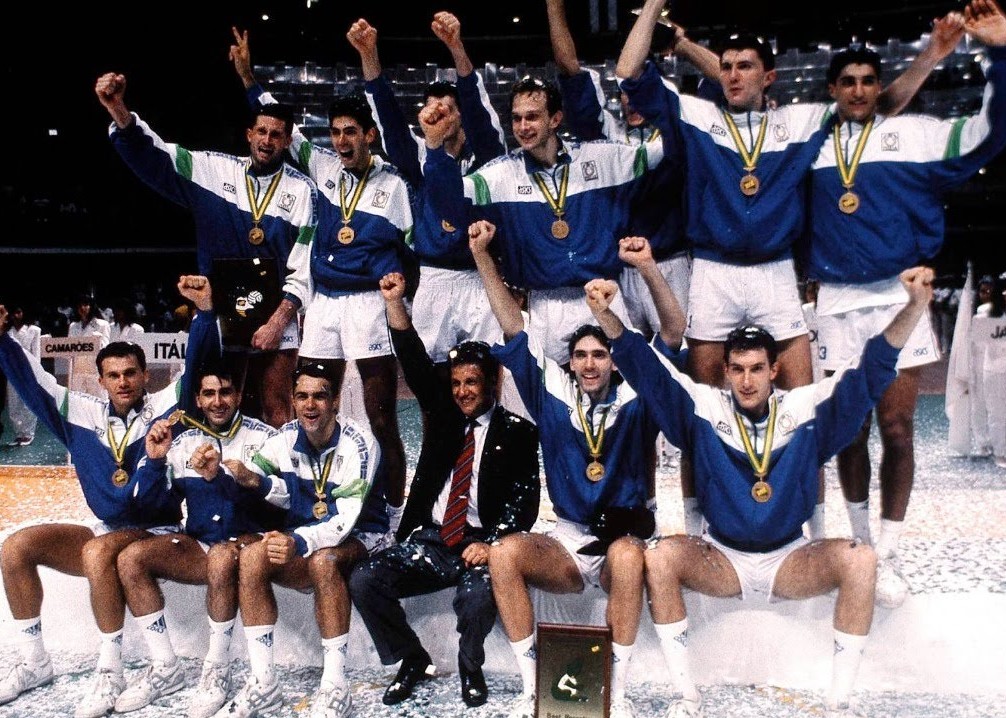
 Federico Pasquali
Federico Pasquali
Italian sport: Generation of phenomena in Italian volleyball
- WTI Magazine #133 Nov 14, 2020
-

 Federico Pasquali
Federico Pasquali
Thirty years ago Italy fell in love with a hitherto little known sport: volleyball. Thanks to twelve athletes and an Argentine coach who trained an Italian club, on October 28, 1990 millions of Italians were glued in front of the television, as had only happened for the national soccer team until then, to attend the final of the World Volleyball Championship in Rio de Janeiro, Brazil. On the field the surprising Italian team faced the strongest national team in the world, that of Cuba. A national team, the Italian one, which had already achieved some important results: in 1978 the conquest of a world silver medal and in 1984 the bronze medal at the Olympic Games in Los Angeles. Two medals but no victory and above all no effect on the Italian people who almost did not notice the two results, because volleyball was not a very beloved sport.
In 1989, with the technical guidance entrusted to the Argentine coach Julio Velasco, today considered one of the "gurus" of world volleyball, Italy obtained its first success by winning the European Championship in Sweden. A historic victory because it interrupted the cycle of 9 consecutive successes of the former Soviet Union (from 1967 to 1987), considered for decades the home of world volleyball. The Italian national team had left its mark with that victory and in 1990, on the eve of the World Championships, the most rated national teams such as Cuba, Soviet Union and Brazil had discovered the strength of Italy. Even the United States, which in those years had become a volleyball power with the victories at the 1984 Los Angeles and 1988 Seoul Olympics and the 1986 Paris World Cup, had a chance: but for the American national team that was a disaster, with 3 defeats in the first round.
Coach Velasco's team, however, was still considered an outsider and so the World Cup began without too many expectations. In the first phase Italy easily won the two games with Cameroon and Bulgaria and lost with a straight 3-0 the third game against the favorites, the Cubans. In the round of 16 Italy regained its strength and won 3-0 against Czechoslovakia, and in the quarterfinals overtook Argentina by 3-0. Something changed in the mindset of the twelve Azzurri, especially thanks to the great psychological work that Julio Velasco did on the players. On October 27, 1990, in the Brazilian volleyball temple, the Maracanazinho, Italy faced the hosts of Brazil. Thousands of unleashed fans incited Brazilian favorites from the stands, making it difficult for Italians to play with confidence. The first set closes with a score of 15-6 for Brazil, which puts the Italians on the ground. But like in a fairytale, Italy reacts strongly and wins the second set (15-9) and then the third one (15-8) shutting down the Brazilian fans and the opposing players. But the hosts do not want to lose and so they even the score by winning the fourth set by 15-8. The fifth and decisive set to enter the final is just as exciting. Italy goes ahead 9-5, then Brazil comeback until 14-13 for Italy. But at the first match point the Azzurri don't make mistakes and they conquer the set 15-13 and the match that takes them to the final, where the Cuban battleship that won without effort with Italy in the initial round is waiting for them.
We are at the long-awaited day, October 28, 1990, the day when volleyball became a sport known by all Italians, the day when the Italian National team began to be known by all as the team composed of a "generation of phenomena". Twelve players, Zorzi, Lucchetta, Tofoli, Gardini, Cantagalli, Bernardi, Giani, De Giorgi, Masciarelli, Bracci, Martinelli, Anastasi, whose names will be known by all Italians in the following years. The final is once again played at Maracanazinho and Italy starts the match badly losing the first set by 15-12. But this time Italy gets up immediately and with more strength than usual. We win the second set by 15-11, in the third we humiliate the Cubans by winning 15-6 and in the fourth we go ahead 10-5. Cuba, however, does not give up and manages to recover until 15-14.
In the last play of that World Cup, Tofoli raises the ball for the hitter Bernardi who scores the point of 16-14 giving Italy the first world title in history. That evening all Italians were in front of the television and in the following days the feat of the Italian national team was celebrated on Italian newspapers, radio and television. That October 28, 1990 was the starting point of a team that would then dominate the world of volleyball for almost ten years. Italy, in fact, won two other consecutive World Cups (1994 and 1998), one World Cup (1995) and eight World Leagues (1990, 91, 92, 94, 95, 97, 99 and 2000), one silver medal at the Olympic Games in Atlanta 1996 and one bronze medal in Sydney 2000. Victories obtained by the "generation of phenomena", with the player who scored that last point in the 1990 final, Lorenzo Bernardi, elected in 2001 by the World Volleyball Federation as the best player of the 20th Century together with the American legend Karch Kiraly.